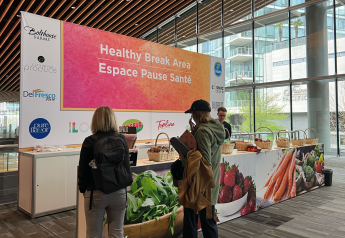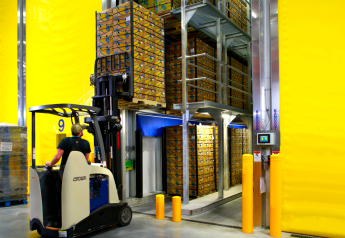E-grocery sales plummet by 10% year-over-year

Shoppers aren’t buying groceries online like they used to.
The U.S. online grocery market finished November with $7.7 billion in total sales, down 10% compared to a year ago, but only 2% lower than the $7.8 billion reported for the two prior months, according to a news release based on the monthly Brick Meets Click/Mercatus Grocery Shopping Survey fielded Nov. 29-30.
The year-over-year decline in total sales was driven by fewer households buying groceries online, combined with lower order frequency and constrained spending per order among monthly active users, the report showed. Delivery was the only method to maintain sales versus a year ago, and the downward pressures were more present in grocery formats than in mass formats, like Walmart and Target.
The total number of households that ordered groceries online using any of the three receiving methods — delivery, pickup, or ship-to-some — contracted 7% in November versus last year. The decline was driven by a dramatic drop in the 60-and-older age group and a significant slide among the core customer segment of 30–44-year-olds. Compared to the prior year, the grocery monthly-active-user base dropped 5% while the mass base rose by 6% as cost considerations become more important and consumers try to avoid unnecessary spending.
Related news: February's e-grocery sales rose almost 9%
Cost was cited as the top factor in the choice of where to shop online by 42% of delivery and/or pickup monthly active users in November, up from 37% in August 2020 when this question was first fielded. The share of mass monthly active users who cited cost as the most important selection criteria has remained around 45% during that time, while the share of grocery customers who cited cost as their top reason increased from 25% in August 2020 to 38% in November 2022.
“When it comes to shopping online — especially for delivery or pickup — cost considerations include more than the price paid for a basket of products,” Brick Meets Click partner David Bishop said in the release. “Many customers also evaluate the total cost associated with using the service, which can include special charges, standard fees and tips. And, when comparing the total of these costs to the customer, there’s a sizable gap in favor of mass versus grocery.”
This increased focus on cost may be influencing where and how grocery’s customers receive online orders and motivating some of them to shift trips to mass stores — especially those who already shop online with both formats.
While the composite repeat intent level climbed 4 percentage points to 62% in November versus last year, mass retailers continued to outperform grocery retailers. For November, this key metric, which measures the likelihood that an online grocery customer will use the same service again within the next 30 days, came in at 65% for mass compared to 59% for grocery. So, beyond increased cost pressures and declining AOVs, grocery retailers' headwinds are also due to challenges related to providing the experience that customers now expect with online grocery shopping.
“Given that many shoppers are becoming more cost conscious, grocers should consider offering a tiered fee structure based on when a customer wants to receive their order and reduce some of the additional costs customers face when shopping online,” Mercatus President and CEO Sylvain Perrier said in the release. “We know that if offered the choice between shorter cycle times and lower fees, a significant share of online customers will select a time later that day, or even the next day, to save at least a couple of dollars.”
For more information, visit the Brick Meets Click eGrocery Dashboard for November 2022 or visit the eMarket/eShopper page.







